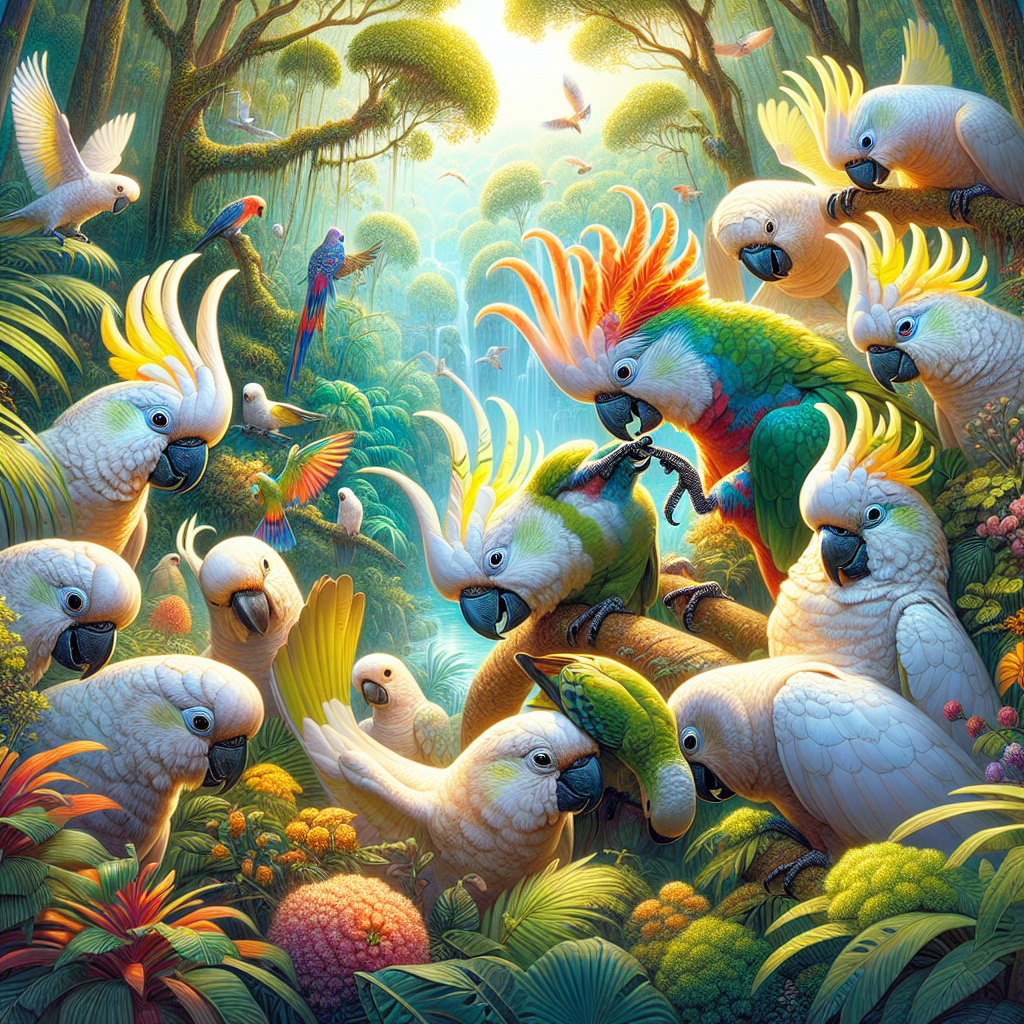Cockatoos Uncovered: Fascinating Insights into Their Colorful Lives

Cockatoos, with their striking plumage and lively personalities, are among the most captivating avian species in the world. Beyond their aesthetic appeal, these birds exhibit an array of behaviors and characteristics that have fascinated ornithologists, bird enthusiasts, and pet owners alike. In this article, we will explore the colorful lives of cockatoos, shedding light on their social dynamics, intelligence, communication, and conservation status.
The Color Palette of Cockatoos
Cockatoos belong to the family Cacatuidae, which encompasses 21 different species, each displaying unique and vibrant colors. From the iconic white cockatoo with its impressive crest to the rose-breasted cockatoo, also known as the galah, these birds display a spectrum of hues—ranging from soft pastels to bold, eye-catching shades. Their colors are not merely for show; they play an essential role in communication, mating displays, and camouflage within their natural habitats.
Social Butterflies of the Avian World
Social structure plays a vital role in the lives of cockatoos. These birds are incredibly social and tend to live in flocks, often consisting of 10 to 30 individuals or more. This gregarious nature fosters strong bonding within the group. Cockatoos are known for their playful interactions, frequently engaging in vocalizations, grooming, and cooperative behaviors.
Within these flocks, hierarchical structures can be observed. Dominance is often established through displays of physical prowess, vocal competitions, or posturing, ensuring a level of social order that aids in group cohesion. Parental care in cockatoos is also noteworthy; both male and female participate actively in raising their young, showing a strong commitment to family.
The Intelligence of Cockatoos
One of the most astonishing traits of cockatoos is their intelligence. Packing a punch in their small frames, these birds exhibit problem-solving skills that rival those of some primates. Cockatoos are known for their ability to use tools, such as sticks and leaves, to extract food from hard-to-reach places. This behavior is not only a testament to their cognitive abilities but also enhances their adaptability in various environments.
Their intelligence is further highlighted through their impressive vocal mimicry and communication skills. Cockatoos have a diverse vocal repertoire, which includes whistles, squawks, and even the ability to mimic human speech and other environmental sounds. This adaptability allows them to communicate effectively with their flock mates, alerting them to potential threats or coordinating social activities.
Cockatoos in the Wild: Habitats and Diet
Cockatoos are primarily found in Australia, New Guinea, and surrounding islands, inhabiting various ecosystems, from tropical forests to grasslands and scrublands. Their dietary preferences are as varied as their habitats; cockatoos typically feed on seeds, nuts, fruits, and roots, utilizing their powerful beaks to crack open hard shells and access the nutritious contents within.
Seasonal migrations are common among certain species of cockatoos. They often travel great distances in search of food, necessitating strong navigational skills and social coordination. Their foraging behavior demonstrates their adaptability, as they can exploit different food sources depending on availability.
Conservation Status and Challenges
While cockatoos are beloved for their vibrant personalities and enchanting appearances, many species face significant threats in the wild. Habitat loss due to deforestation, land conversion for agriculture, and urban development poses a substantial risk to their populations. Illegal trapping for the pet trade is another major concern, particularly for species such as the critically endangered yellow-crested cockatoo.
Conservation efforts are underway to protect these remarkable birds and their habitats. Organizations are working to establish protected areas, promote sustainable land use practices, and raise public awareness about the plight of cockatoos. Education programs targeting local communities can be vital in fostering a sense of responsibility toward these unique creatures and their environment.
Cockatoos as Companions
Cockatoos have become increasingly popular as pets, adored for their affectionate nature and intelligence. However, prospective owners must understand that these birds require considerable attention, social interaction, and mental stimulation. Neglect can lead to behavioral issues; thus, adopting a cockatoo is a long-term commitment akin to caring for a child or a dog.
Proper care involves ensuring a spacious environment, a balanced diet, and plenty of opportunities for enrichment. With love and proper care, pet cockatoos can bring joy and companionship for decades.
Conclusion
From their dazzling colors and complex social structures to their remarkable intelligence and vocal abilities, cockatoos offer a glimpse into the wonders of the avian world. As we uncover more about their colorful lives, it becomes increasingly vital to prioritize their conservation. By advocating for sustainable practices and protecting their natural habitats, we can ensure that future generations will be able to witness the beauty and charisma of cockatoos in the wild and as cherished companions.